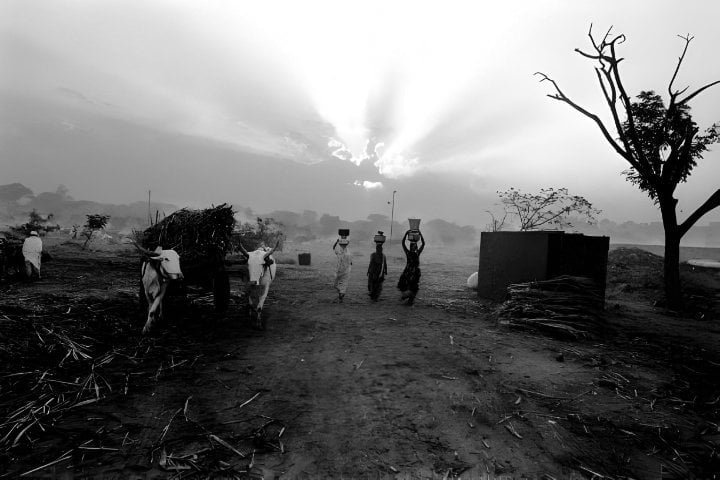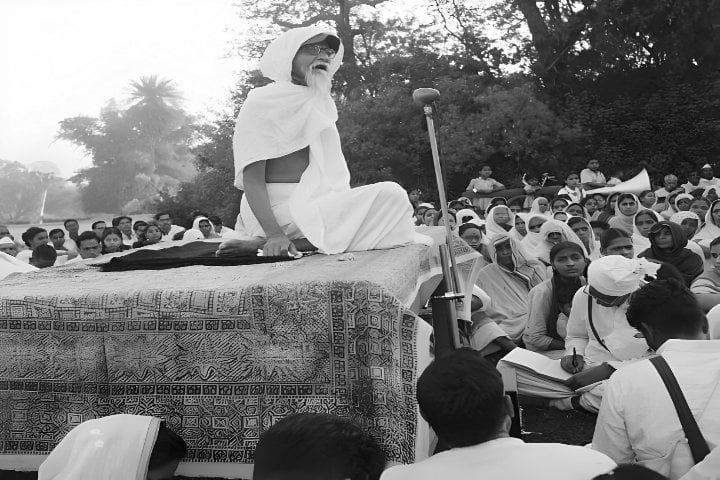- Concept of Socialization
- Media and Social Change
- Social Movements in India
- First War of Independence 1857
- Swadeshi Movement 1905
- Non-Cooperation Movement 1920
- Civil Disobedience Movement 1930
- Quit India Movement 1942
- Land Reform Movement in India
- Chipko Movement 1973
- Dalit Panther Movement 1972
- Mandal Commission Report and Caste-Based Reservation in India 1990
- Narmada Bachao Andolan 1985
- Right to Information Act (RTI) 2005
- India Against Corruption Movement (2011) and Lokpal Act (2013)
- India’s Awakening: The Nirbhaya Movement’s (2012) Impact
Land Reform Movement
The social movements in India are more than just demonstrations; they represent a nation demanding progress, equality, and justice. Every social movement in India has contributed to the dynamic narrative of the nation’s history.
In This Article
A few of India’s most prominent social movements and their impact on cultural change and societal progress are listed below:

- The Freedom Struggle: 1857–1947
- Post-Independence Movements: 1947–1980
- Late 20th Century: Liberalization and Beyond: 1980–2000
- The 21st Century: New Media, New Movements: 2000-Present
This article will discuss the Land Reform Movement, part of India’s Post-Independence Movements (1947–1980).
Significance of the Land Reform Movement
During the 20th century, land reforms were a big part of the socialist revolutions in Russia (1917) and China (1940s). Land reforms were seen as the most important step towards social transformation during these two revolutions, which drove countries worldwide to do the same.
Land reform was marked as a process to change existing patterns of land ownership, tenure systems, rent-seeking practices, agriculture wages, modes of revenue collection, and the like.
Land reforms had three different objectives:
- Political: to establish the political authority of the government or a political party intending to come to power
- Social: to bring about equitable relations in agriculture
- Economic: to increase the economic efficiency of the land
Land Reform in India
India’s land reform process is rooted in the fight against colonial rulers.
The land tenures in British India were adopted and modified to suit the economic and political requirements of the British economy. The colonial rule established India’s Zamindari and Raiyatwari land systems to regulate revenue collection.

The Permanent Settlement Act of 1793 introduced the Zamindari system, which helped the British collect land revenue. Zamindars were part of the political and administrative structure of British rule in India.
In the Zamindari system, land rights were given to the local tax collector, who was not directly interested in cultivating the soil. Because of this, millions of people who owned and worked on their land regularly became tenants in their fields.
In the Raiyatwari system, there were no middlemen who owned land. Instead, real tillers owned their land and could pass it on to others.
However, the Zamindars and the Raiyats did not have complete property rights. The British Government was in charge, and it could decide how much money from land should be paid to the government.
During the independence movement, the Congress party wanted to involve peasants to spread the nationalist movement to rural areas. To mobilize peasants, Congress promised to remove the British-imposed Zamindari system.
Post-independence India’s aspirations for social justice, equality, and economic development grew stronger. However, poverty and socioeconomic inequalities persisted due to the legacy of centuries of feudalism, colonial exploitation, and unequal land distribution. In response to these challenges, land reform movements gained momentum in the 1950s, aiming to address historical inequalities and uplift marginalized sections of society.
Land Reforms Approach
In India, the government has largely been in charge of land reforms and has taken a “top-down” approach. Few peasant movements at the grass-roots level resulted in the implementation of land reforms with some degree of success, like the Telangana peasant struggle of the 1940s and the Naxalbari movement.

Vinoba Bhave’s Bhoodan movement is known for its peaceful means of persuasion in distributing land among the landless. But these movements had no pan-India presence.
The onus of setting an agenda for land reforms solely fell on the national government. The union government set the agenda through its five-year plan. The land policy goals outlined in the national plans were twofold:
- To eradicate all aspects of exploitation and social injustice within the agricultural system
- To remove obstacles to agricultural productivity that come from the agrarian structure that has been passed down through generations.
To accomplish these goals, various measures were put in place. These included:
- Regulating rent
- Ensuring tenants had the security of tenure and, in due course, ownership rights,
- Capping agricultural holdings
- Distributing excess land to landless
- Consolidating land holdings
Many institutions and actors in India get involved in policymaking, such as political parties, the constitution, the legislature and executive, the bureaucracy, the judiciary, and other interest groups. Many of them have their own vested interests, which affect the course of policymaking and implementation.
Land is a state subject according to the constitution. The Central government does not have control over land reforms or farming. The state government can make legislation about land reforms.
Post-independence India witnessed many land reform legislations passed in various states. Different states approached land reforms differently and used various strategies to address the various land tenure systems in place. The laws were amended multiple times in a short period of time to address problems that came up while implementing the reform.
Multiple laws govern land reforms because of the complexity of land relations. These laws deal with land tenure rights, getting rid of middlemen, setting limits on landholdings, and consolidating landholdings. Even laws were enacted to meet the specific needs of a certain area within a state instead of the whole state.
Long-term Impact of the Land Reform Movement
The land reform movements of the 1950s had profound and far-reaching implications for Indian society, economy, and politics.

Social Justice and Empowerment
Land reforms were essential in addressing historical injustices and empowering groups that were previously oppressed, such as tenant farmers, landless laborers, and Scheduled Castes and Tribes. Land reforms helped the rural poor become more socially integrated, gain respect, and move up in society by giving them the right to own land and access resources.
Poverty Alleviation and Rural Development
Land reforms, which involved land redistribution and resources, played a significant role in rural development and poverty alleviation. This was achieved through the promotion of equitable distribution of wealth, an increase in agricultural productivity, and the enhancement of livelihood opportunities.
Land ownership and other farming assets helped rural communities break the cycle of poverty and dependence.
Political Transformation
Land reform movements brought big political changes by uniting peasant and agricultural groups. These groups then pressured the government to pass progressive land reform laws. After independence, India’s politics changed when agrarian-based political parties and rural constituencies were given more power. This gave marginalized groups more representation and involvement in government.
The CUET UG 2024 Mass Media and Communication syllabus contains this topic under the Communication section.





